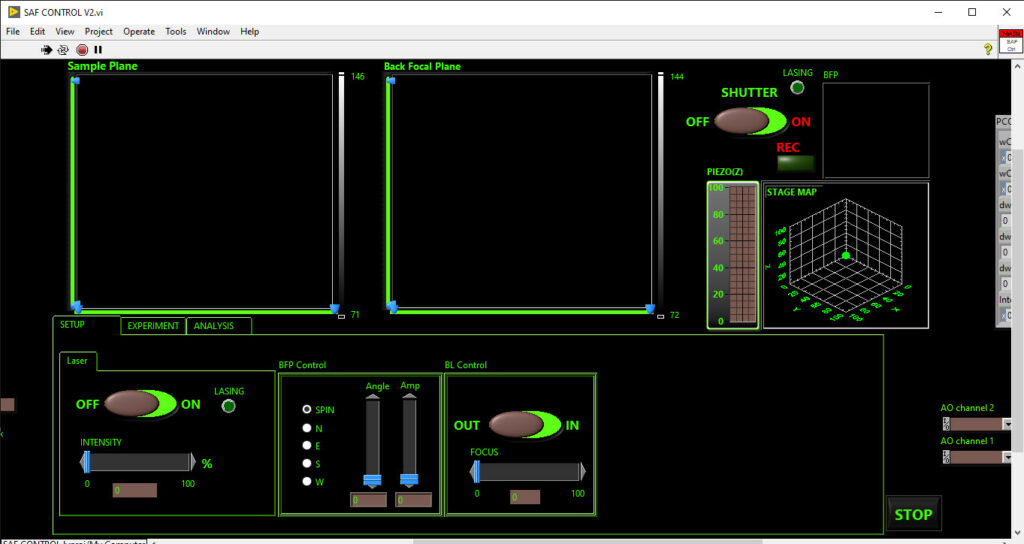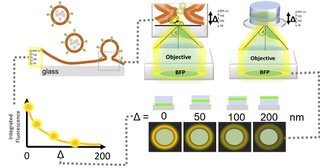May 2024
NANOSCALE GOES COLOUR-CODED: Hiring an engineer (IE CNRS, CDD 1 year)
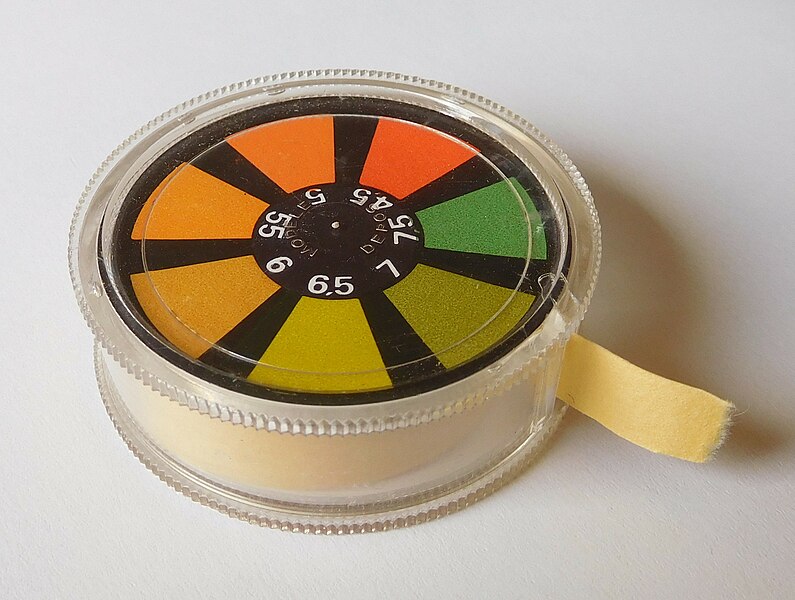

We are being used to read off pH from comparing dripped Lackmus paper to a colour scale. Likewise, the Suzuki method encodes keys by colour, which allows to code melodies before mastering musical notes. But did you think about encoding nanometric optical distances along the microscope’s axis into colour? We did. And this is the essence of CC-NANOSCALE, or colour-coded nanoscale, a project now funded by UPC.
Following the promising market study conducted by the agency TEMATYS and Martin Oheim’s presentation of intermediate results in front of a panel of experts, non-experts and innovators, SPPIN’s team 1 (Biophysics of the brain) was awarded a 2024-25 pre-maturation grant from Université Paris Cité (UPC).
We are now hiring a study engineer (ingénieur d’études) (H/F/or other) starting ASAP and during 1 year. Please send applications (letter of motivation, CV and three academic references) to : nanoscale [AT] sppin.fr
November 2023
A Colour-Encoded Nanometric Ruler for Axial Super-Resolution Microscopies

Recent progress has boosted the resolving power of optical microscopies to spatial dimensions well below the diffraction limit. Yet, axial super-resolution and axial single-molecule localisation typically require more complicated implementations than their lateral counterparts. Also, there is a lack of suitable calibration tools that would permit a facile metrology along the microscope’s optical axis. Axial test samples are also needed for quantifying nanometric drift, or axial fluorophore mobility, or again for quantifying the sub-wavelength light confinement in near-field microscopies. In our work work, submitted to Opt Commun and now available as a preprint on arXiv, we propose a simple solution for axial metrology by translating an axial metrology challenge into a spectral imaging and mixing problem, by aid of a multi-layered single-excitation, dual-emission test slide, in which axial distance is colour-encoded.
October 2023
SPPIN’s NANOCOQ project is laureate of the 2024-25 Maimonide grant scheme
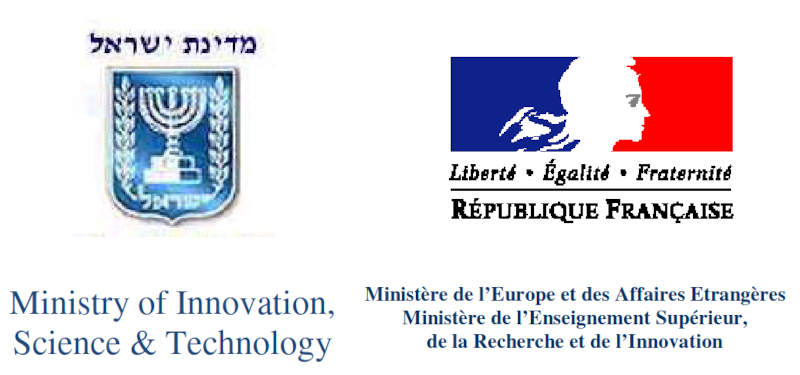
The objective of the Franco-Israeli Maimonide program is to develop scientific and technological exchanges of excellence between laboratories of the two countries
SPPIN’s ‘biophysics of the Brain’ team, directed by SPPIN’s Martin Oheim, and the lab of Prof Adi Salomon of Bar-Ilan University (BINA Nanocenter and Department of Chemistry) postulated in this year’s topic area “Applied Physics: Applied photonics and lasers” with the “NANNOCOQ” project, that elegantly translates a nano metrology challenge, measuring distances along the microscope’s optical axis, into a spectral imaging and unmixing task.
April 2023
Congratulations to Hodaya, who’s paper “Characterization of Nanometric Thin Films with Far‐Field Light” is now accepted in Advanced Optical Materials.
August 2022
Characterizing nanometric axial distance with far-field light
A group of researchers around Adi Salomon (BINA Nanocenter, Ramat-Gan, Israel) and Martin Oheim (SPPIN) have developed a simple nanometric calibration tool for axial super-resolution imaging. In a pre-print available on biorXiv, they describe a simple, non-invasive, optical technique for simultaneously characterizing the refractive index, thickness, and homogeneity of nanometric transparent layers. In the case of the calibration sample, these layers are made of the biomimetic polymer, My-133-MC, having a refractive index of 1.33, so as to approach the cytosol for biological applications. The technique is based on the detection in the far field and the analysis of supercritical angle fluorescence (SAF), i.e., near-field emission from molecular dipoles located very close to the dielectric interface. Applications to localising FM-dye labelled vesicles in cortical astrocytes are presented.
January 2022
NANOSCALE 2022 is now open for contributions.
Call for contributions: More information on this website soon. Contact: nanoscale

CONFIRMED SPEAKERS:
Frederique de Fornel (Dijon) keynote
Maia Brunstein (Paris); Nicolas Demaurex (Genève); Thierry Galli (Paris); Andreas Guse (Hamburg); Yuval Garini (Haifa); Rodolphe Jaffiol (Troyes); Gerhard Schütz (Vienna); Kaitlin Szederkenyi (Toronto); Chris Yip (Toronto)
SCIENTIFIC COMMITTEE:
Martin Oheim, Marc Guillon, Carine Julien (Paris)
Adi Salomon, Yossi Abulafia, Racheli Ron (Ramat-Gan)
September 2021
Understanding the effect of scattered evanescent light
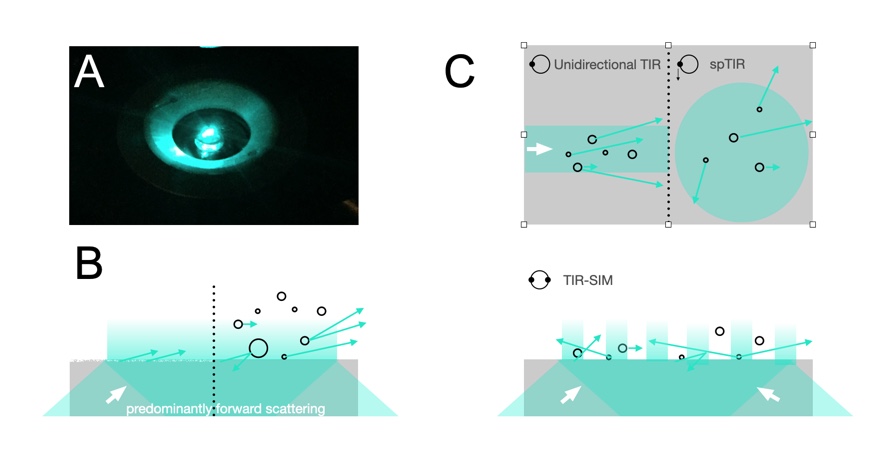
Evanescent-wave scattering is a topic in classical electrodynamics and in the study of colloidal particles near a boundary. However, how such near-surface scattering at sub-cellular refractive-index heterogeneities degrades the excitation confinement in biological total internal reflection fluorescence microscopy has not been well studied. Carine Julien and Martin Oheim of SPPIN’s biophysics teams now addressed this very relevant question in a commentary published in the Biophysical Journal : https://pubmed.ncbi.nlm.nih.gov/34509502/
June 2021 – bis
NANOSCALE goes material sciences!
To speed up the innovation cycle and to open new applications in the field of light-matter interactions and surface chemistry, SAF microscopy has been established in the Salomon lab in the Chemistry Department of Bar-Ilan University at the BINA Nanocenter. Check out www.lab-salomon.com for research projects and available positions!
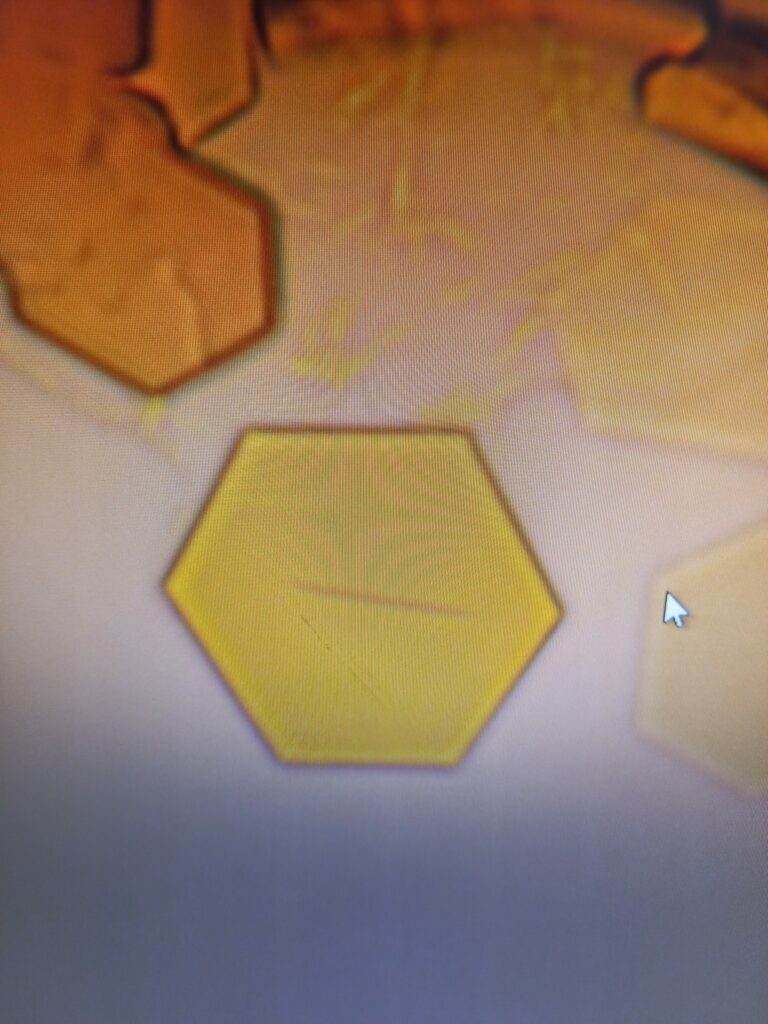
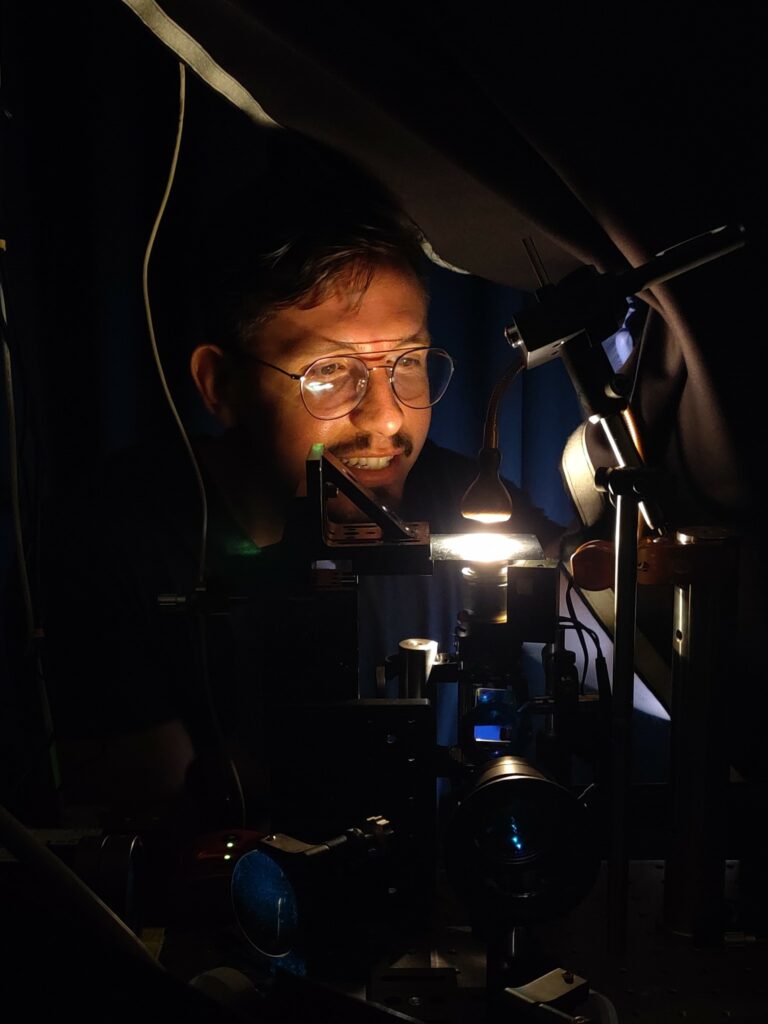
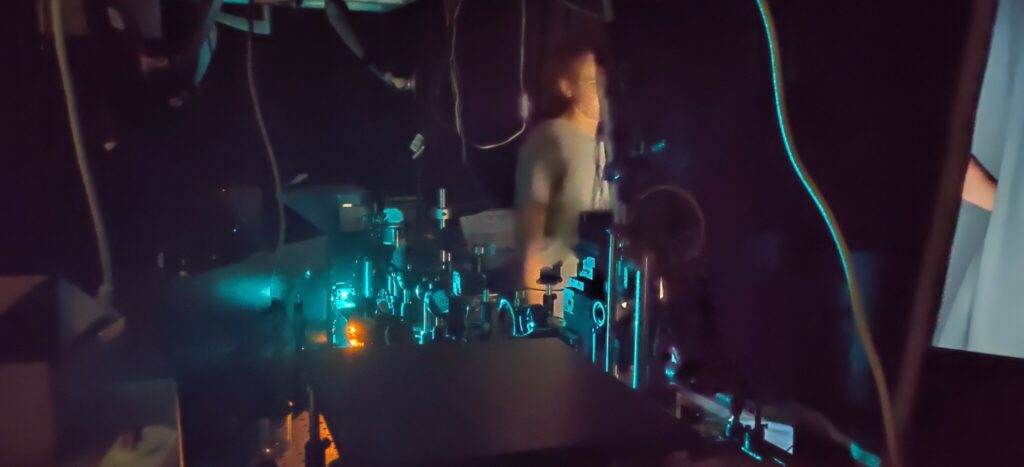
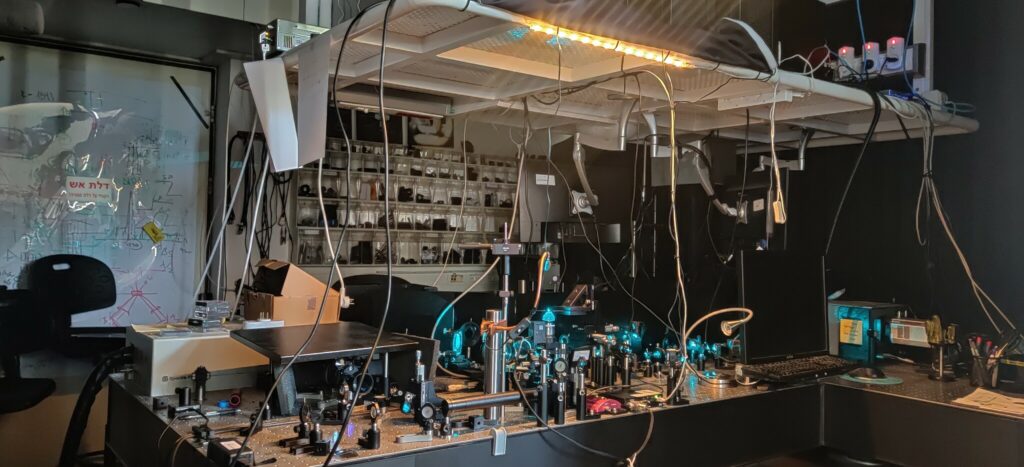
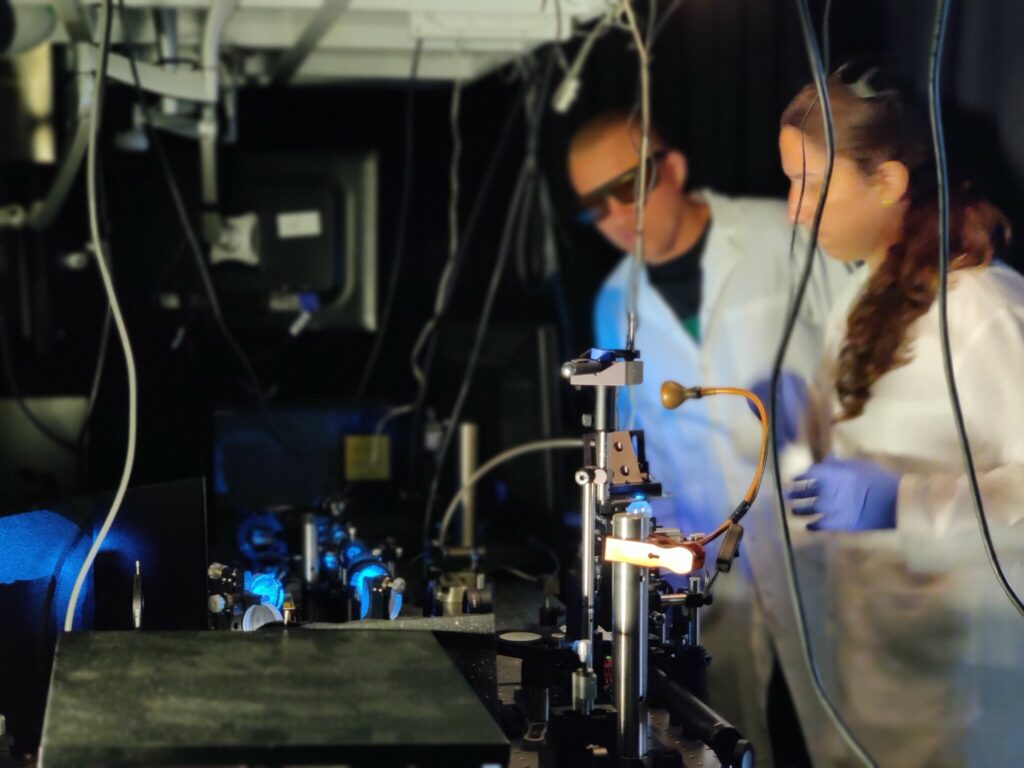
June 2021
NANOSCALE reaches out for early science education. We warmly welcome Julie CALMEL for a voluntary internship.
My name is Julie and I’m a student in the 1 st year of high school. At sixteen, I’m very happy to do an internship within SPPIN’s research teams. Last year, I had the chance to discover the research world last year, in physics and biology laboratories of the Ecole Normale Supérieure (Paris). I really enjoyed my first experience, for this reason I’m taking the opportunity to improve my knowledge and develop team spirit in SPPIN’s team. Therefore I’m very exiting to take part in a science research project during a month that will be an extremley enriching experience for me.
May 2021
Club NanoMétrologie newsletter features the Nanoscale project as a Key event in Europe :
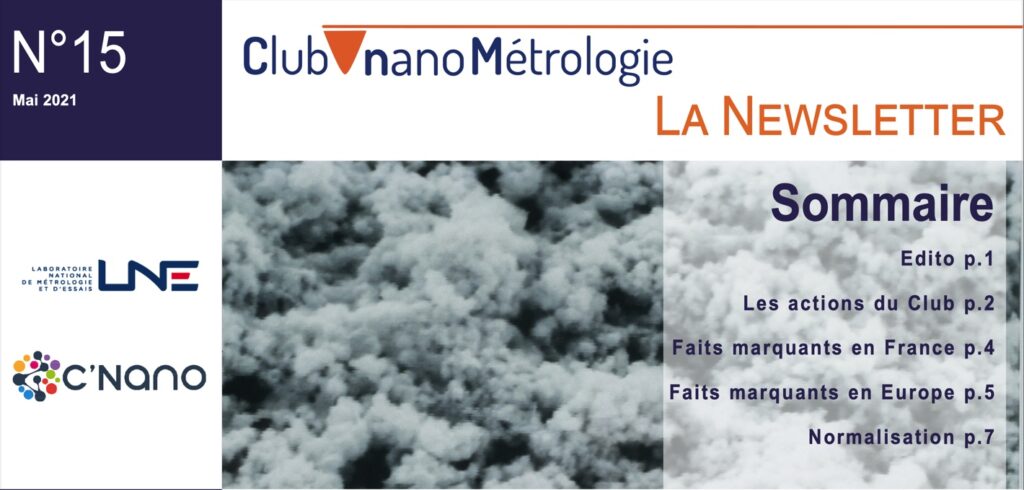
5 Apr 2021
Carine Julien will rejoin the NANOSCALE team from 5 April. She is an assistant professor in chemical physics currently affiliated with the Ecole Normale Supérieure (ENS Paris Saclay). Carine will be working on advanced aspects of super-critical angle fluorescence microscopy as well as supercritical-angle Raman imaging.
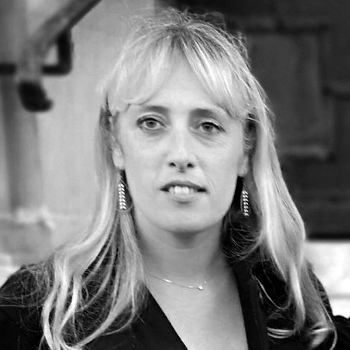
“Initially trained as a chemist, I’ve always been interested in the spectroscopic signals one may obtain after a physical stimulus of the matter, and particularly by an optical stimulus. I specialized in fluorescence and Raman spectroscopies and microscopies, empowering them at the nanoscale, i.e. at the single nano-object level. One of the main aims of this research is to increase the spatial resolution beyond the diffraction limit. Indeed, single molecules can be used as sensors of their local environment and provide a better insight by avoiding ensemble averaging characteristic for macroscopic measurements.
To be able to run such studies with weak Raman signals- their drawback is to be a quite inefficient process- I used enhancement strategies offered by a plasmonic substrate that give rise to SERS, i.e. Surface enhanced Raman Scattering.I find it very interesting not only to use the spectroscopy to study the sample, but also -by working a thet single-molecule level- to investigate the mechanism of this enhancement; the latter being assumed to have 2 components: a well-established electromagnetic field enhancement and a « chemical effect », responsible for the selectivity of the enhancement.
Concerning Fluorescence, I’ve been working on different configurations from widefield to confocal, and exploited the spectroscopic signal both at the steady state and time resolved (lifetime) for numerous kinds of samples, from organic molecules and fluorophores, inorganic samples such as Qdots, or hybrid materials for photovoltaic devices. I find it very interesting to discover new material and try to understand their specificities and the way optical signal can help in the understanding of the structures and interactions at stake.
I’m very happy to join SPPIN’s Nanoscale team to exploit even more such spectroscopic signal, at the Fourier plane, and after experiencing a very wide field of chemical samples, discover and understand biological samples and processes by optical means. This is both challenging and exciting for me.”
The entire NANOSCALE project team extends a very warm welcome to Carine.
1 Feb 2021
We welcome Natalia Mañas–Chavernas as a new Master student in quantitative Fourier-plane imaging
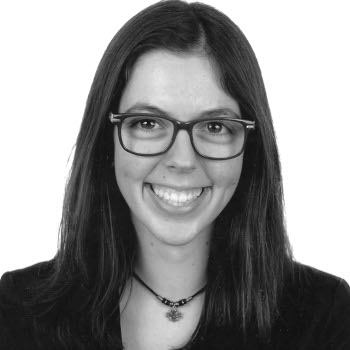
My name is Natalia and I am studying biomedical engineering with the BME Paris Master Program. My research interests are on image treatment and data analysis using machine learning, which is why I plan to specialize next year in Bioimaging.Although I have some experience from internships I made at hospitals and at a start-up, I would like to learn more about how research is performed in a lab, as I aim for a career in research. Regarding my skills, I am most comfortable programing in Python, Java and Matlab. I did my Bachelor on classification algorithm development using machine learning and, throughout my degree, I have worked on several projects on image enhancement and segmentation techniques.I consider myself a passionate, hard-working and proactive person who can learn quickly and adapt. Furthermore, I have a strong sense of responsibility, of effort and rigor. I hope to be a great asset to the NANOSCALE team and I believe this experience to be extremely enriching for me. Thank you for having responded positively to my application.
11 Oct 2020
Omer Shavit presented the first version of the new microscope GUI, an important step towards a smooth workflow and microscope control.
